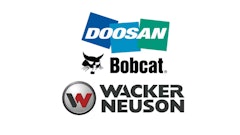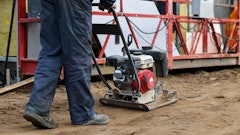
Equipment manufacturers, as well as their customers, look at construction equipment financing as routine. A necessity if you will — especially if you don’t have the hundreds of thousands of dollars sitting around burning a hole in your pocket. But, you know, who does?
Having a deeper understanding of ways rental companies can use financing can reveal a path to sales, growth, and possibly long-term customer relationships.
The financing formula in equipment rental is relatively simple: what is the equipment cost, what can I rent it for, and how often will it rent. These tie to the flexibility an equipment finance company can provide for a good return on investment and how the terms can affect cash flow.
However, as rentals are likely to keep an asset in their fleet long-term, flexibility becomes less of an issue. As bonus depreciation has lessened over the last couple of years, financial companies have started to notice a change.
“We’ve seen an increase of rental companies wanting to do leasing versus owning because leasing provides a much lower cost per month,” says Chris Johnson, SVP of Construction for Mitsubishi HC Capital America. As bonus depreciation lessens, tax savings tend to follow suit. In other words, as the tax advantages of owning assets lessen, people have been shifting toward leasing. According to Johnson, roughly 25 percent more rental companies have done so in than previously.
What is the benefit of bonus depreciation? Typically, an owner would be able to claim a percentage of the value of the equipment over a period of time. Instead, the government enacted a change in the code that allowed owners to depreciate 100 percent of that in year one. All this was a federal push to get customers to invest in capital goods and engage the economy. It was a savings and benefit for owners of equipment but you couldn’t take advantage of it if you leased it. This changed over the Biden administration, but there are some talks that the Trump organization may reinstate the benefit.
Johnson identified a handful of ways to find value from the strategic use of equipment financing:
Purchase equipment — as well as parts and materials. Financing construction equipment can, of course, be a good option for businesses that can’t, or do not find it financially prudent, to buy it outright. Manufacturers also must often move quickly to purchase necessary materials. And today, used construction equipment can be in as much demand as new equipment.
Access the latest technology. Leasing programs can let equipment rental businesses upgrade to newer (perhaps more energy-efficient) models more frequently. As a result, they avoid equipment obsolescence, and have the right equipment they need to perform more, and more types of, jobs.
Improve cash flow. Equipment financing programs help them obtain funding when the equipment ships and allow businesses to acquire the equipment with convenient construction equipment loans or leases. Spreading the cost of equipment over time means that cash is available for other needs.
Facilitate customer sales. A financing provider will learn what each customer needs to make a purchase work and will help those customers finance down payments or even provide 100% of the equipment financing. When it comes to working with dealers, offering finance options to help them acquire the equipment they need — on terms that work for them — cements stronger relationships, short- and long-term.
Another major component here is the uncertainty of the modern market with the unknowns of tariffs and interest rates. Although some major projects have experienced delays, customers still have a horizon of work. Work they will need equipment.
But that uncertainty and skepticism toward the market may very well push customers toward renting and find that flexibility.
This seems to be across the board, both at the dealership and the major players in the equipment rental industry. “United Rental’s utilization has gone through the roof the last couple of months,” says Johnson. (We spoke with Johnson in May 2025).
“Fleet optimization and financing should go hand in hand where [rental businesses] are looking at different structures, whether it be loans, leasing, matching depreciation and usage to financing,” says Johnson.




















![Building Angled Sm Edit 6050b8d213f1b[1]](https://img.forconstructionpros.com/mindful/acbm/workspaces/default/uploads/2025/09/building-angled-sm-edit6050b8d213f1b1.Ygq5aAos3b.png?ar=16%3A9&auto=format%2Ccompress&crop=focalpoint&fit=crop&fp-x=0.53&fp-y=0.23&fp-z=2&h=135&q=70&w=240)